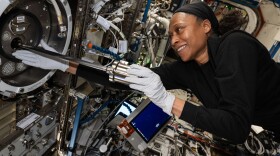-
This holiday season it's probably not American chestnuts roasting on an open fire because the species is nearly extinct. Researchers at SUNY-ESF are working to develop blight-tolerant American Chestnut trees.
-
Syracuse’s NASA Astronaut Jeanette Epps is back on Earth after more than 230 days in space.
-
When Micron announced its $100 billion plan to build computer chip factories in central New York, the company also promised funds for the community. One of the most tangible results of that promise is now a reality: the newest exhibit at Syracuse’s Museum of Science and Technology.
-
A special workgroup has started devising what a first-of-its-kind computer chip exhibit will look like at the MOST, Syracuse’s Museum of Science and Technology.
-
Onondaga Community College is revving up its programs and facilities to prepare for Micron and the jobs the semiconductor plant will create in central New York.
-
A professor at SUNY Oswego is using a grant to improve the design of electric vehicle technology with the goal of decreasing charging time.
-
On this week's episode of the Campbell Conversations, Grant Reeher speaks with Maurice Isserman and Stewart Weaver, the authors of, "Fallen Giants: A History of Himalayan Mountaineering from the Age of Empire to the Age of Extremes."
-
On this week's episode of the Campbell Conversations, Grant Reeher speaks with Maurice Isserman and Stewart Weaver, the authors of, "Fallen Giants: A…
-
Scientists at SUNY Upstate in Syracuse, have some advice on where to check for ticks on your body. Upstate’s Citizen Science Tick Testing Program has been…
-
A new study of dinosaur eggs, as well as a football-size egg from Antarctica, shows how some ancient creatures relied on soft shells rather than hard ones.
-
Dyson's ideas often occupied a space between science fiction and science. He helped design, among other things, a nuclear reactor that could be safely operated "even in the hands of an idiot."
-
Modern genomes from Nigeria and Sierra Leone show signals that scientists call "ghost" DNA — from an unknown human ancestor. That means that prehistoric humans likely procreated with an unknown group.















